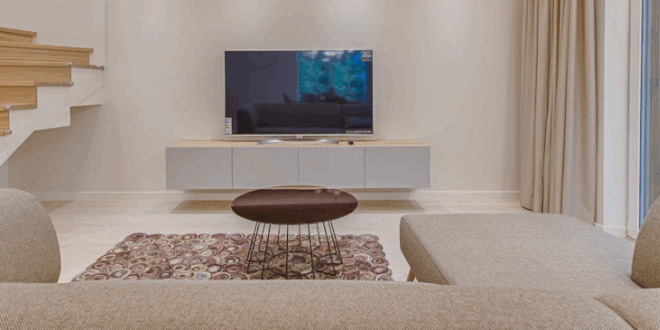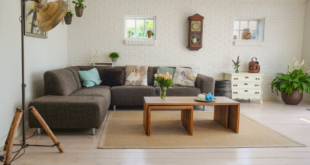As lifestyles shift — with more flexible work, more time spent at home, and growing interest in sustainability and comfort — home design in 2026 is evolving too. Designers are blending practicality, individuality and warmth, leading to spaces that feel more personal, versatile, and grounded.
Below are the key trends gaining momentum this year.
1. Colour & Mood: Warm Neutrals, Earthy Tones, and Rich Accents
- After years of minimalist whites and cool greys, 2026 sees a move toward warmer, more grounded palettes — think sand, clay, pale oak, honey, soft terracotta and muted natural tones. This softer palette adds warmth and a “lived‑in” feeling to spaces. Alex Cleghorn+2Parade+2
- At the same time, richer accent colours are becoming more common — such as deep greens, plums, teals, and mellow reds — often used in moderation to add character and depth without overwhelming. Homes and Gardens+2House & Garden+2
- This shift reflects a desire for homes to feel calm, comforting, and more connected to nature — a kind of “quiet luxury.” Parade+2A Beautiful Space+2
How to use this: If you’re redecorating, consider replacing stark white walls with warmer neutrals, and bring in accent colours via soft furnishings, artwork, or a feature wall — especially in living rooms or bedrooms.
2. Natural, Honest Materials & Texture — Comfort Over Gloss
- 2026 celebrates real wood, natural fibres, stone, woven textures, and tactile finishes. Think oak or walnut cabinetry, rattan or wicker details, linen or wool textiles, and other organic materials that age gracefully. Alex Cleghorn+2Nebora+2
- Mixed materials and textures — combining rough and smooth surfaces, matte and soft — are being used to create depth, warmth, and a sense of authenticity. starfurniture.com+2A Beautiful Space+2
- The result: homes that feel more grounded, natural, timeless — especially compared with ultra‑sleek, high‑gloss minimalism.
How to use this: Introduce wooden furniture or natural‑material accessories; use textured rugs, stone or wood‑look finishes, woven baskets or textiles — even small touches can shift a space toward this warmer, more organic vibe.
3. Furniture & Layout: Curves, Comfort, Flexibility, and Statement Pieces
- Rigid, minimal furniture is giving way to softer, curved designs — arched shelving, rounded sofas, sculptural chairs — making interiors more inviting and less formal. starfurniture.com+2Living on the Côte d’Azur+2
- Furniture is becoming more modular and multifunctional. As our use of space evolves (e.g. remote working, hobby corners, flexible living areas), homes need to adapt — fold‑out desks, modular shelving/storage, versatile seating, built‑ins are all rising in popularity. Alex Cleghorn+2Forbes+2
- Oversized, sculptural seating and statement pieces are trending, treating furniture not just as functional items, but as art — central anchors in rooms. Pfeiffer Design+1
How to use this: If you’re buying furniture, consider pieces with soft lines; look for flexible or customizable items; think about how rooms might serve multiple purposes over time (work, rest, hobbies).
4. Design Depth: Walls, Ceilings, and Spaces as Canvases
- 2026 pushes beyond just “furniture and floor.” Interiors are exploring the whole envelope — ceilings, walls, floors — as areas for design expression. Expect bold tiling or patterned rugs, painted ceilings, sculptural lighting, and decorative wall treatments. Pfeiffer Design+2starfurniture.com+2
- Architectural details are coming back: chair rails, picture‑frame moulding, layered crown or baseboards, wainscoting — but reimagined with clean profiles and modern finishes. This adds subtle elegance and structure to rooms that might otherwise feel plain. ELLE Decor+1
How to use this: If redecorating, consider adding architectural mouldings or accent walls, experiment with ceiling colours or statement lighting, or ground a room with an artistic rug/floor tile — it can dramatically transform how a space feels.
5. Sustainability, Biophilic Design & Eco‑conscious Living
- There’s increasing interest in sustainable, natural, and eco‑friendly materials — reclaimed wood, recycled finishes, eco‑textiles, low‑impact materials — as people value longevity, craftsmanship, and environmental responsibility. A Beautiful Space+2Forbes+2
- Biophilic design — bringing elements of nature indoors — continues to grow: indoor plants, natural light, organic shapes, and natural materials that create calm, restorative environments. A Beautiful Space+1
- The goal is homes that feel connected to nature, grounded, and in harmony with sustainability values — not only stylish, but mindful of people and planet.
How to use this: Introduce houseplants and natural light; choose furniture and finishes made from sustainable or reclaimed materials; prioritise quality over fast‑fashion décor.
6. Spaces That Flex: Multifunctional, Adaptive, and Lifestyle‑Ready
- Given shifting lifestyles — remote work, hobbies at home, changing family needs — homes in 2026 are designed to adapt: living rooms double as offices, guest rooms become hobby zones, storage is hidden but accessible, and furniture is modular. Alex Cleghorn+2starfurniture.com+2
- Built‑ins, clever storage solutions, zones for different functions, and multipurpose furniture are part of this flexibility. It’s about creating homes that evolve with you, rather than rigid spaces. Forbes+2Forbes+2
How to use this: If you’re redesigning, think about how rooms will be used in different ways — invest in flexible furniture (e.g. modular sofas, foldable desks), add storage intelligently, and design with adaptability in mind.
7. Character, Personalisation & the Handmade Touch
- “Perfect” minimalism is out — 2026 welcomes imperfect, handmade, artisan, and characterful decor. Whether it’s hand‑woven textiles, locally crafted furniture, or unique decor pieces, personality and individuality matter. Pfeiffer Design+2Nebora+2
- People want homes that tell a story — not cookie‑cutter interiors, but spaces shaped by taste, craftsmanship, memories.
How to use this: Mix vintage or artisanal pieces with modern elements; choose décor that feels personal — like handcrafted ceramics, woven rugs, unique lighting, or reclaimed‑wood furniture.
What This Means for Homeowners
The broad picture for 2026 home trends is a move away from generic minimalism toward spaces that are warm, natural, flexible, personal, and sustainable. Homes become living environments that adapt to life’s changing needs — relaxed but refined, functional but full of character.
Whether you’re planning a full renovation or a small refresh, there is a wealth of ideas to pick from — warm colours, natural materials, adaptive furniture, biophilic touches, and personal flourishes — depending on your style and budget.
 Homeowners Club If you are one of the 15 million homeowners in the UK, the free to join online Homeowners Club is for you.
Homeowners Club If you are one of the 15 million homeowners in the UK, the free to join online Homeowners Club is for you.








